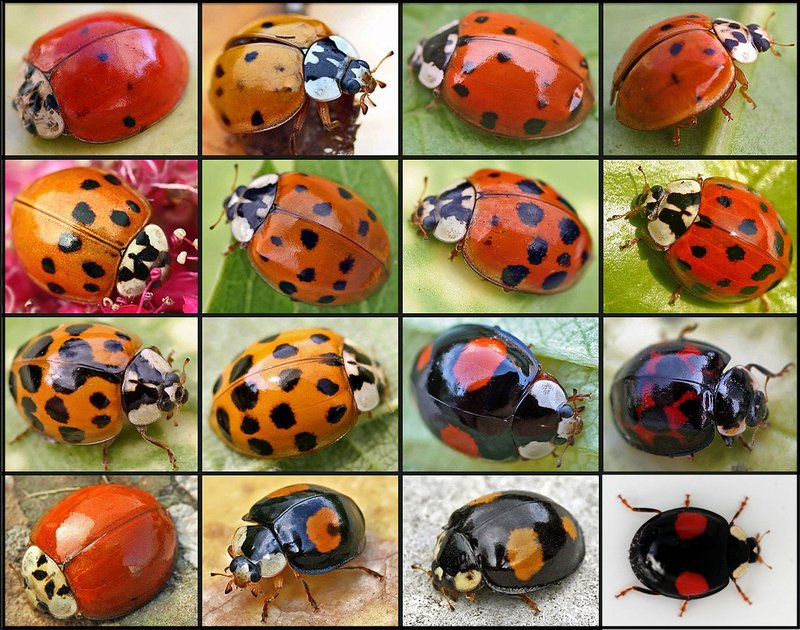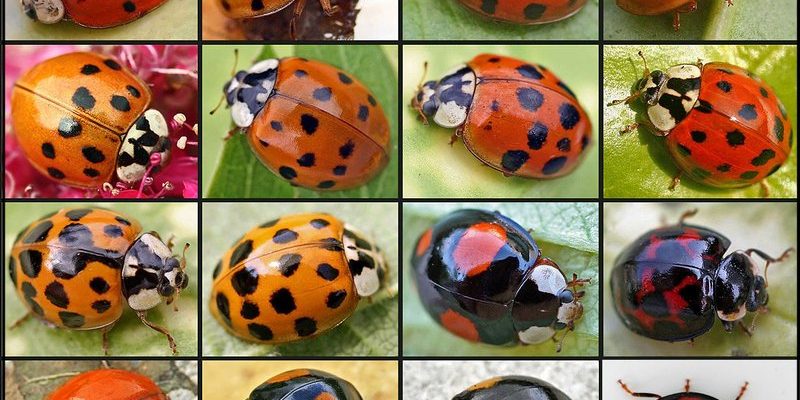
Ladybugs, which belong to the *Coccinellidae* family, play a significant role in nature as natural pest controllers. They help keep insect populations in check, especially aphids. However, beneath their cute and friendly exterior, there are several misconceptions that need addressing. Let’s pull back the curtain and debunk some common myths about these beloved bugs!
Myth 1: Ladybugs Are All the Same
You might think all ladybugs look alike—just those classic red bugs with black spots. However, that’s a common myth! There are over 5,000 species of ladybugs, and they come in various colors, shapes, and sizes. Some are orange, yellow, or even black. The variations depend on where they live and their specific habitats.
For instance, the *twenty-spotted ladybug* has, you guessed it, twenty spots! It’s crucial to recognize that not all ladybugs have the iconic red-and-black look. The differences in their appearance can help them adapt to various environments, making them more resilient as species.
When observing ladybugs in your garden, take a moment to appreciate this biodiversity! Each species contributes differently to the ecosystem, and some can be more beneficial than others, depending on their diet and behavior.
Myth 2: Ladybugs Are Pests
You might hear someone say that ladybugs are just another pest invading the garden, but that couldn’t be further from the truth. In reality, ladybugs are *beneficial insects*. They primarily feed on aphids, spider mites, and other plant-eating pests. By keeping these harmful insects in check, ladybugs help promote healthier plants and gardens.
Understanding their role in our ecosystem is vital. Without ladybugs, you might see a surge in aphid populations, which could lead to more significant damage to your garden plants. So, rather than considering them a nuisance, think of them as your garden’s little superheroes, working tirelessly to protect your precious flowers and vegetables.
If you’re dealing with aphids, inviting ladybugs into your garden can be a great natural way to combat those pesky critters without resorting to harmful chemicals.
Myth 3: All Ladybugs Are Harmless
While ladybugs are often considered harmless, there’s a side to them that many people overlook. Certain species, such as the Harmonia axyridis (commonly known as the Asian lady beetle), can bite. These bites are usually not painful and don’t typically cause harm, but they can be an unwelcome surprise.
Additionally, some ladybug species secrete a yellow fluid when threatened. This fluid can stain fabrics and surfaces, which is another reason they might not be as innocent as they seem. However, this behavior is a defense mechanism, aiming to deter predators. So, while they aren’t dangerous to humans, it’s good to be aware that they can cause minor inconveniences.
In short, ladybugs have their quirks, and while they generally pose no threat, it’s wise to handle them gently and avoid squeezing them.
Myth 4: Ladybugs Bring Good Luck
Many cultures believe that ladybugs bring good luck. You might have heard that if a ladybug lands on you, it’s a sign of a fortune to come. While this is a charming notion, it’s important to remember that luck is subjective. There’s no scientific evidence backing up the idea that ladybugs directly influence fortune.
That said, the belief in their lucky aura has been around for centuries and promotes a sense of joy and positivity. So, even if there’s no concrete proof that ladybugs can grant wishes, it’s nice to think of them as a little sprinkle of happiness wherever they show up.
If you do encounter a ladybug, maybe take a moment to make a wish! It can be a light-hearted tradition, adding a bit of fun when you spot one in your garden or home.
Myth 5: Ladybugs Don’t Fly
You might be surprised to learn that ladybugs are actually great flyers! Many people assume they just crawl around, but these insects can travel significant distances by flying. Their bright colors and spots aren’t just for show—they also help signal to predators that they can be unpalatable.
When a ladybug takes to the air, it’s typically searching for food or a suitable place to lay eggs. They can travel miles, which helps them find new habitats in which to thrive. If you’ve ever watched them soar gracefully through the air, you know how incredible their flying abilities can be.
The next time you see a ladybug take flight, appreciate the little creature’s journey. They’re not just stationary beauties—they’re active participants in the ecosystem around them.
Understanding ladybugs helps us appreciate these charming creatures and their crucial role in our gardens and ecosystems. While they might be steeped in myth, the truths about ladybugs reveal their importance as natural pest controllers and their intriguing diversity.
So, the next time you see a ladybug, remember the myths you’ve learned: they’re not all the same, they can bite, and they fly! With their vibrant presence, they offer a delightful reminder of nature’s wonders. Embrace these little bugs, not just for the good luck they symbolize but also for the essential roles they play in our gardens. After all, ladybugs are more than just charming—they’re fascinating, too!

